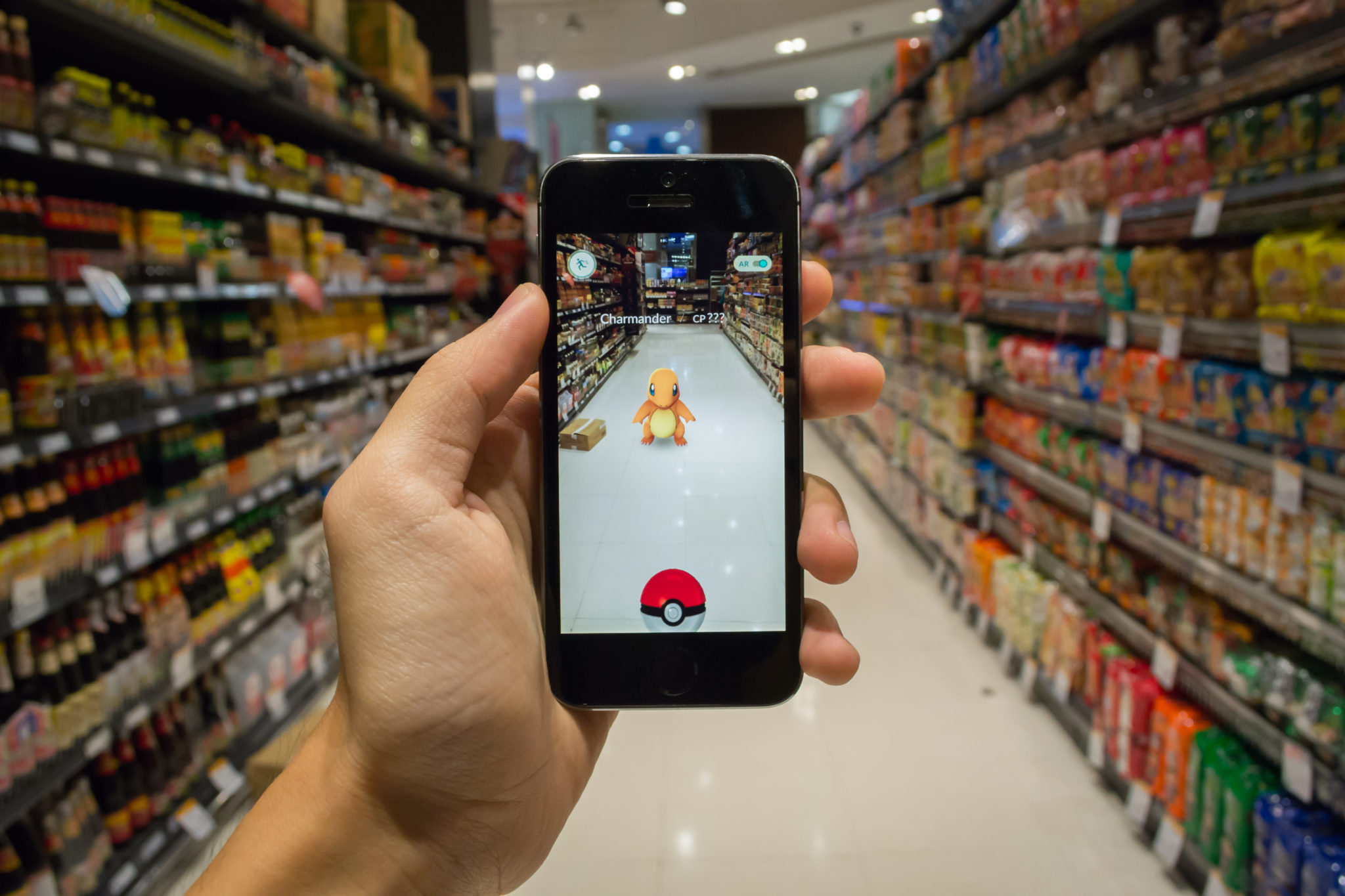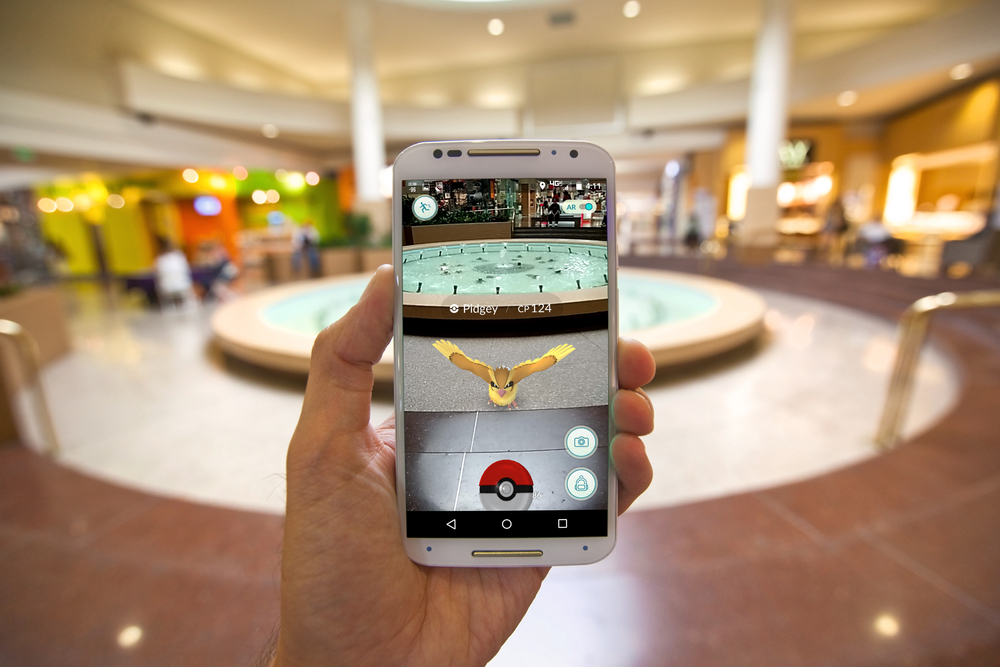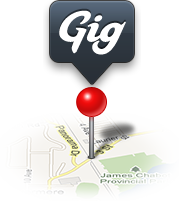[caption id="attachment_141973" align="aligncenter" width="4529"]

Pokemon Go sponsored locations[/caption] While Pokemon Go is in
decline, it’s still raking in cash. In an interview, an executive from the company behind the app says it makes money when users visit certain areas as well as via in-app purchases. Niantic Vice President Mathieu de Fayet recently sat down with Brazilian news entity
Globo to discuss the app’s popularity. The published report says Niantic earns 15 cents per visitor to
sponsored locations, but the company later corrected that statement. It now says “Niantic’s cost per visit (CPV) model visit has partners spending less than $.50 / daily unique visit to sponsored locations.” Sponsored locations are often “gyms” where gamers can train their Pokemon. In addition to McDonald’s, Niantic has added both Sprint and Starbucks to its partner program. Additionally, de Fayet says Niantic has driven 500 million people to these sponsored locations. While we can only guess at the
actual dollar amount sponsors spend per visitor (which may fluctuate depending on a variety of factors like time of day or how many visitors a location has), the CPV model has apparently earned it somewhere between $75-250 million. [caption id="attachment_138946" align="aligncenter" width="1000"]

Pokemon Go[/caption] As
TechCrunch points out, McDonald’s has over 3,000 stores in Japan alone that serve as active sponsored locations, and could have paid up to $900,000 per day at the peak of the Pokemon craze last Summer. Niantic isn’t the first digital-first business who has tried to make money from how often we venture into the real world. Yelp’s ad model is based on driving traffic to restaurants and other locations, and Foursquare makes money by taking user-generated data and spinning it into licensing. It also has a ‘claiming’
module for businesses listings. Pokemon Go’s monetization also isn’t reliant on sponsorships. In-app purchases help Niantic generate revenue, which also nod towards businesses. Many smaller shops worldwide
used ‘lures,’ an in-app purchase that attracted Pokemon to various locations, as a means to draw customers. While not every business can be a ‘Pokestop,’ enough were at least close enough to one to try to lure customers as well as Pokemon. It may seem a daunting task to build a monetization platform like Niantic’s, but it’s worth consideration. With augmented reality believed to be making a big splash on iOS soon, the App Store will explode with a series of apps making use of it. Standing out will be key, as will churning profit. Gamified apps are already popular (badges and mayorship is how Foursquare/Swarm keeps us engaged), and strategies like Niantic’s make them a profitable business beyond ads.
 Pokemon Go sponsored locations[/caption] While Pokemon Go is in decline, it’s still raking in cash. In an interview, an executive from the company behind the app says it makes money when users visit certain areas as well as via in-app purchases. Niantic Vice President Mathieu de Fayet recently sat down with Brazilian news entity Globo to discuss the app’s popularity. The published report says Niantic earns 15 cents per visitor to sponsored locations, but the company later corrected that statement. It now says “Niantic’s cost per visit (CPV) model visit has partners spending less than $.50 / daily unique visit to sponsored locations.” Sponsored locations are often “gyms” where gamers can train their Pokemon. In addition to McDonald’s, Niantic has added both Sprint and Starbucks to its partner program. Additionally, de Fayet says Niantic has driven 500 million people to these sponsored locations. While we can only guess at the actual dollar amount sponsors spend per visitor (which may fluctuate depending on a variety of factors like time of day or how many visitors a location has), the CPV model has apparently earned it somewhere between $75-250 million. [caption id="attachment_138946" align="aligncenter" width="1000"]
Pokemon Go sponsored locations[/caption] While Pokemon Go is in decline, it’s still raking in cash. In an interview, an executive from the company behind the app says it makes money when users visit certain areas as well as via in-app purchases. Niantic Vice President Mathieu de Fayet recently sat down with Brazilian news entity Globo to discuss the app’s popularity. The published report says Niantic earns 15 cents per visitor to sponsored locations, but the company later corrected that statement. It now says “Niantic’s cost per visit (CPV) model visit has partners spending less than $.50 / daily unique visit to sponsored locations.” Sponsored locations are often “gyms” where gamers can train their Pokemon. In addition to McDonald’s, Niantic has added both Sprint and Starbucks to its partner program. Additionally, de Fayet says Niantic has driven 500 million people to these sponsored locations. While we can only guess at the actual dollar amount sponsors spend per visitor (which may fluctuate depending on a variety of factors like time of day or how many visitors a location has), the CPV model has apparently earned it somewhere between $75-250 million. [caption id="attachment_138946" align="aligncenter" width="1000"]  Pokemon Go[/caption] As TechCrunch points out, McDonald’s has over 3,000 stores in Japan alone that serve as active sponsored locations, and could have paid up to $900,000 per day at the peak of the Pokemon craze last Summer. Niantic isn’t the first digital-first business who has tried to make money from how often we venture into the real world. Yelp’s ad model is based on driving traffic to restaurants and other locations, and Foursquare makes money by taking user-generated data and spinning it into licensing. It also has a ‘claiming’ module for businesses listings. Pokemon Go’s monetization also isn’t reliant on sponsorships. In-app purchases help Niantic generate revenue, which also nod towards businesses. Many smaller shops worldwide used ‘lures,’ an in-app purchase that attracted Pokemon to various locations, as a means to draw customers. While not every business can be a ‘Pokestop,’ enough were at least close enough to one to try to lure customers as well as Pokemon. It may seem a daunting task to build a monetization platform like Niantic’s, but it’s worth consideration. With augmented reality believed to be making a big splash on iOS soon, the App Store will explode with a series of apps making use of it. Standing out will be key, as will churning profit. Gamified apps are already popular (badges and mayorship is how Foursquare/Swarm keeps us engaged), and strategies like Niantic’s make them a profitable business beyond ads.
Pokemon Go[/caption] As TechCrunch points out, McDonald’s has over 3,000 stores in Japan alone that serve as active sponsored locations, and could have paid up to $900,000 per day at the peak of the Pokemon craze last Summer. Niantic isn’t the first digital-first business who has tried to make money from how often we venture into the real world. Yelp’s ad model is based on driving traffic to restaurants and other locations, and Foursquare makes money by taking user-generated data and spinning it into licensing. It also has a ‘claiming’ module for businesses listings. Pokemon Go’s monetization also isn’t reliant on sponsorships. In-app purchases help Niantic generate revenue, which also nod towards businesses. Many smaller shops worldwide used ‘lures,’ an in-app purchase that attracted Pokemon to various locations, as a means to draw customers. While not every business can be a ‘Pokestop,’ enough were at least close enough to one to try to lure customers as well as Pokemon. It may seem a daunting task to build a monetization platform like Niantic’s, but it’s worth consideration. With augmented reality believed to be making a big splash on iOS soon, the App Store will explode with a series of apps making use of it. Standing out will be key, as will churning profit. Gamified apps are already popular (badges and mayorship is how Foursquare/Swarm keeps us engaged), and strategies like Niantic’s make them a profitable business beyond ads. 

